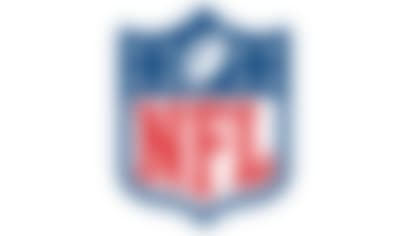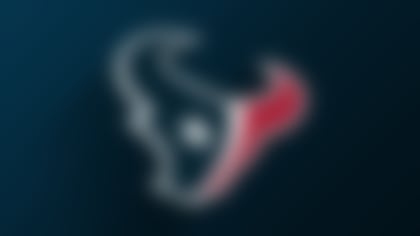With negotiations toward a new collective bargaining agreement stuck in neutral for now, it might be the ultimate case of putting the cart before the horse to even discuss the NFL's substance-abuse policy.
But the league isn't mincing words on its main focus in drug testing for the next CBA: human-growth hormone.
"We believe it's critical," said NFL senior vice president of law and labor policy Adolpho Birch, who runs the league's drug program.
The players have made it clear that any changes to the policy will have to be collectively bargained within the next agreement, whenever that happens. So we may well be a ways off from anything happening.
NFLPA to pay players
The NFL Players Association has started contacting players found eligible to receive payments from its lockout fund and will begin those payments on April 15, writes Jason La Canfora. **More ...**
But the NFL's desire to implement such screening is more realistic than ever before.
Last summer, minor-league baseball instituted HGH testing for the first time. In the days following, I spoke to Larry Bowers, lead scientist for the United States Anti-Doping Association. He told me that, at that time, there had been "a valid test for more than a year now."
Around the same time, the Canadian Football League approved testing for HGH as part of its new drug policy, which went into effect in January. Not only is there now testing in the country, but also within the sport.
"Our union didn't have an issue with it," said CFL chief operating officer Mike Copeland. "The point that a blood test is a personal violation, our union didn't raise it. It just wasn't a controversial issue for us. It was helped by the fact that we're doing the testing through a third party -- the Canadian Center for Ethics in Sport (which also runs testing in junior hockey and Canadian collegiate sports).
"They only deal with labs that are (World Anti-Doping Association-) accredited, and we talked to them at length about the ability to have HGH testing, and they gave us full confidence that synthetic HGH can be detected. Understanding we had a reliable test, and understanding the union was on board with us, we thought this was an important step to prevent the use of performance-enhancing drugs."
The IOC used during the 2004 Athens and 2008 Beijing Olympics both a form of direct screening that measured the ratio of growth hormones in the body and a new indirect test used in conjunction that has the ability to widen the detection window from 48-72 hours to 7-14 days.
A series of penalties is in place to deal with violations found through the CFL's testing. The first positive test subjects a player to an education program and more frequent, mandatory testing. The second positive test merits a three-game suspension. The third positive brings a year's suspension, and a fourth is punished with a lifetime ban.
The discipline scale for PEDs is different in the NFL, but Birch's motivation to broaden the policy is similar to those outlined in Canada. Yet despite the logical reasons, no major American professional sport is testing for HGH yet.
"We want to be proactive here," said Birch. "It's not to be seen as a leader, but because in this case being a leader is about how you protect the health and safety of your players, how you ensure that you're maintaining a level, competitive playing field, and how you understand the importance of being role models to others."
Asked if the education already has been in place for a PED that's been banned for 20 years, Birch responded that he "would doubt there's a person in our league that doesn't understand growth hormone."
Copeland simplified what Birch said above, emphasizing that the testing sends a message to players at all levels that taking HGH is not an acceptable way to gain an edge on an opponent.
One thing Copeland was quick to add was that key to implementing the testing was the full cooperation of the union. It went in as part of the CFL's new CBA last June, which took about a year to negotiate. Copeland said that it was important that the players believed they possessed ownership of the initiative.
"It was critical that the union participated in the process," Copeland said. "Firstly, we couldn't do it unilaterally if we wanted to. But on top of that, if we're not full partners, you don't come up with the kind of product you do when you're talking through issues and objectives. We did that over a 12- (to) 18-month period, and the timing worked out so it went in the CBA. It was critical not only to get the buy-in, but (in) having a policy that was the toughest in pro sports and showing leadership together."
Impact of labor unrest
The future of several franchises could be on the line, given that the current labor unrest will impact the ability of cities to build stadiums to keep their teams, writes Albert Breer. **More ...**
In a similar sense, Birch says without HGH testing "you're going to subject to that question" -- whether there are players who take HGH because there's no test -- "and it's in our combined interest to eliminate the question" while noting the policy has "always been a joint objective to deter and detect."
Birch said the NFL has pursued HGH testing since 2008, but until now, concerns in administering the tests -- more so than their reliability -- has made it difficult. The league's feeling, based on the success of other sports that are currently testing, is that the time has now come and application of the screening is now practical and ready to go.
"From an administrative standpoint, there would be some logistical differences, but those are minimal in the grand scheme of things," Birch said. "It's less than a tablespoon of blood they're taking, and it's also something that 15-year-old gymnasts at the Olympics are undergoing. If they can handle it, I believe our players could do it without a significant problem.
"It does present a few issues, but nothing insurmountable. Our belief is we could implement something effective that's minimally intrusive in a short period of time."
Once the little matter of splitting up $9.3 billion is settled, that's exactly what it sounds like the NFL is planning to do.
The "Sham" report
I'm headed to St. Paul, Minn., this week for the start of litigation in Brady v. NFL, in which arguments will be heard to determine whether an injunction should be granted to the players to lift the ongoing lockout.
The NFL filed a brief March 21, and its primary arguments were that the National Labor Relations Board ruling on the "sham" defense aspect of the case needed to be made first and that the precedent from the 1932 Norris-La Guardia Act should prevent the federal court from granting an injunction growing from a labor dispute. The NFLPA's class counsel responded Monday by arguing that, per terms of the expired CBA, the NFL couldn't claim the decertification of March 11 was a "sham".
And on and on we go.
Here's one piece of information you can use going into March 6: The matter of "irreparable damages" should be pivotal to Judge Susan Nelson's decision to grant or deny the injunction. The players will try to prove that those damages are incurred by the lockout. The league will try to prove they aren't.
Where it gets tricky is that monetary losses are not considered "irreparable." So the players will have to prove that there is, indeed, damage being levied on careers now -- during March and April -- that cannot be undone.
It's an easier case to make in September or October, to be sure. But if Nelson gets past the legal precedents above -- and there's no saying she will without ruling -- that's the part of this whole thing that should be the deciding factor.
Follow Albert Breer on Twitter @AlbertBreer



